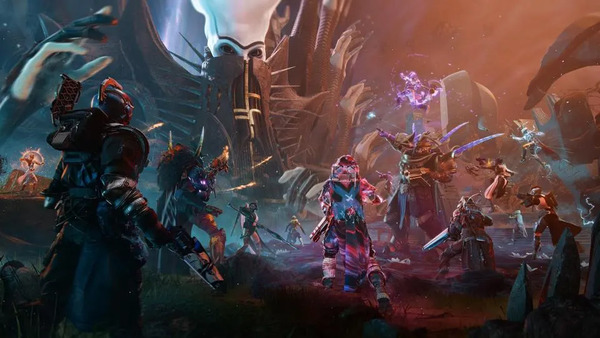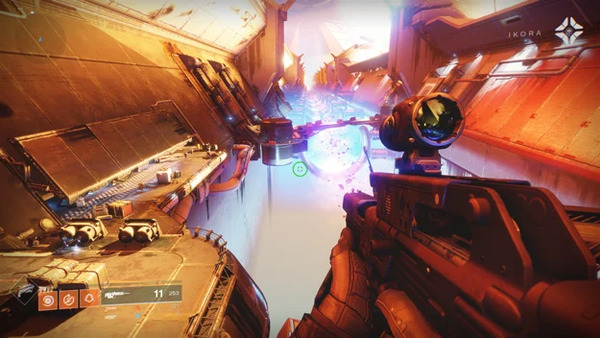Advertisement
Popular Now
Destiny 2, Bungie’s highly acclaimed online multiplayer first-person shooter, has evolved significantly since its launch in 2017. With a mix of PvE and PvP content, the game offers players a rich universe to explore. However, one recurring issue that has captured the community's attention is weapon balance. In a game where precision, strategy, and player skill are paramount, maintaining an equitable environment is crucial. This article will explore the nuances of weapon tuning in Destiny 2, its impact on gameplay, community response, and Bungie's ongoing efforts to achieve balance.

 Bungie places a high value on player feedback, often conducting surveys and analyzing gameplay data to inform their weapon tuning decisions. This data-driven approach allows them to identify trends and outliers within the game's ecosystem. For instance, if a particular weapon type sees a significant increase in usage, developers can investigate its impact on the game's balance.
However, this process is not without its pitfalls. Players sometimes feel that their feedback is overlooked, particularly if their preferred weapon archetypes remain underperforming despite vocal advocacy. This disconnect can lead to frustration and a feeling that the developers are not responsive to the community's needs.
Bungie places a high value on player feedback, often conducting surveys and analyzing gameplay data to inform their weapon tuning decisions. This data-driven approach allows them to identify trends and outliers within the game's ecosystem. For instance, if a particular weapon type sees a significant increase in usage, developers can investigate its impact on the game's balance.
However, this process is not without its pitfalls. Players sometimes feel that their feedback is overlooked, particularly if their preferred weapon archetypes remain underperforming despite vocal advocacy. This disconnect can lead to frustration and a feeling that the developers are not responsive to the community's needs.
 In recent seasons, players have observed trends in weapon performance that have led to intense discussions within the community. For example, the introduction of certain Exotic weapons, like the Witherhoard, shifted the meta significantly. Its ability to create damage zones forced players to adapt their strategies, leading to calls for nerfs.
Community responses vary widely; some players embrace the changes as a way to keep the game fresh, while others lament the constant cycle of balancing. This dichotomy highlights the challenge Bungie faces in catering to a diverse player base, where preferences for different playstyles can conflict.
In recent seasons, players have observed trends in weapon performance that have led to intense discussions within the community. For example, the introduction of certain Exotic weapons, like the Witherhoard, shifted the meta significantly. Its ability to create damage zones forced players to adapt their strategies, leading to calls for nerfs.
Community responses vary widely; some players embrace the changes as a way to keep the game fresh, while others lament the constant cycle of balancing. This dichotomy highlights the challenge Bungie faces in catering to a diverse player base, where preferences for different playstyles can conflict.

The Foundations of Weapon Balance in Destiny 2
Weapon balance in Destiny 2 is critical for ensuring that no single weapon type dominates the gameplay experience. The game features a vast arsenal, ranging from hand cannons and auto rifles to sniper rifles and shotguns. Each weapon type has unique attributes, advantages, and drawbacks, which should ideally allow for diverse playstyles and strategies. Initially, Destiny 2's weapon balancing was informed by player feedback and data analytics. Bungie aimed to create a varied metagame where different weapons could shine in various scenarios. However, balancing these weapons proved to be a challenging endeavor, leading to a cycle of nerfs and buffs that would shape the game's dynamics.Early Imbalances: A Community Divided
In the early days of Destiny 2, certain weapons quickly emerged as dominant choices. Hand cannons, particularly the Thorn and the Last Word, became staples in both PvE and PvP. Their high damage output and ease of use led to a community outcry regarding their overpowered status. Players began to feel that matches were less about skill and strategy and more about who could wield these powerful weapons effectively. This sentiment created a divide within the community, with some players advocating for buffs to underperforming weapons while others sought immediate nerfs to the dominant choices.Seasonal Updates and Tuning Efforts
With the launch of new seasons, Bungie often implements weapon tuning as part of their broader game updates. These seasonal changes are designed to refresh the meta and encourage players to experiment with different loadouts. For instance, the introduction of Season of the Worthy brought significant changes to various weapon archetypes. During these updates, Bungie utilizes community feedback and internal data to assess weapon performance. The goal is to create a more balanced experience where no single weapon becomes the clear choice. However, these updates can sometimes lead to unintended consequences, where a buff to one weapon might render another obsolete.Player Feedback and Data-Driven Adjustments
 Bungie places a high value on player feedback, often conducting surveys and analyzing gameplay data to inform their weapon tuning decisions. This data-driven approach allows them to identify trends and outliers within the game's ecosystem. For instance, if a particular weapon type sees a significant increase in usage, developers can investigate its impact on the game's balance.
However, this process is not without its pitfalls. Players sometimes feel that their feedback is overlooked, particularly if their preferred weapon archetypes remain underperforming despite vocal advocacy. This disconnect can lead to frustration and a feeling that the developers are not responsive to the community's needs.
Bungie places a high value on player feedback, often conducting surveys and analyzing gameplay data to inform their weapon tuning decisions. This data-driven approach allows them to identify trends and outliers within the game's ecosystem. For instance, if a particular weapon type sees a significant increase in usage, developers can investigate its impact on the game's balance.
However, this process is not without its pitfalls. Players sometimes feel that their feedback is overlooked, particularly if their preferred weapon archetypes remain underperforming despite vocal advocacy. This disconnect can lead to frustration and a feeling that the developers are not responsive to the community's needs.
Understanding Weapon Archetypes
Destiny 2 features a variety of weapon archetypes, each with unique characteristics that can affect gameplay. These archetypes include aggressive hand cannons, rapid-fire auto rifles, and precision sniper rifles, among others. Understanding how each type performs in different scenarios is crucial for effective weapon tuning. Bungie's challenge lies in ensuring that each archetype has a place in both PvE and PvP modes. For instance, while hand cannons may excel in close-quarters combat, sniper rifles should remain viable options for long-range encounters. Striking the right balance is essential to maintain the game’s competitive integrity.The Role of the Sandbox Team
At the heart of weapon tuning is Bungie's Sandbox Team, dedicated to refining gameplay elements within Destiny 2. This team conducts extensive testing and analysis to identify potential balance issues. Their work involves not only weapon tuning but also adjustments to armor and abilities that interact with weapon performance. The Sandbox Team's efforts culminate in the regular weapon balance updates seen in patch notes. These updates detail changes made to specific weapons, including damage adjustments, range tweaks, and alterations to handling characteristics. Their transparency with the community helps build trust, even when the changes spark debate.Recent Trends and Community Responses
 In recent seasons, players have observed trends in weapon performance that have led to intense discussions within the community. For example, the introduction of certain Exotic weapons, like the Witherhoard, shifted the meta significantly. Its ability to create damage zones forced players to adapt their strategies, leading to calls for nerfs.
Community responses vary widely; some players embrace the changes as a way to keep the game fresh, while others lament the constant cycle of balancing. This dichotomy highlights the challenge Bungie faces in catering to a diverse player base, where preferences for different playstyles can conflict.
In recent seasons, players have observed trends in weapon performance that have led to intense discussions within the community. For example, the introduction of certain Exotic weapons, like the Witherhoard, shifted the meta significantly. Its ability to create damage zones forced players to adapt their strategies, leading to calls for nerfs.
Community responses vary widely; some players embrace the changes as a way to keep the game fresh, while others lament the constant cycle of balancing. This dichotomy highlights the challenge Bungie faces in catering to a diverse player base, where preferences for different playstyles can conflict.

















